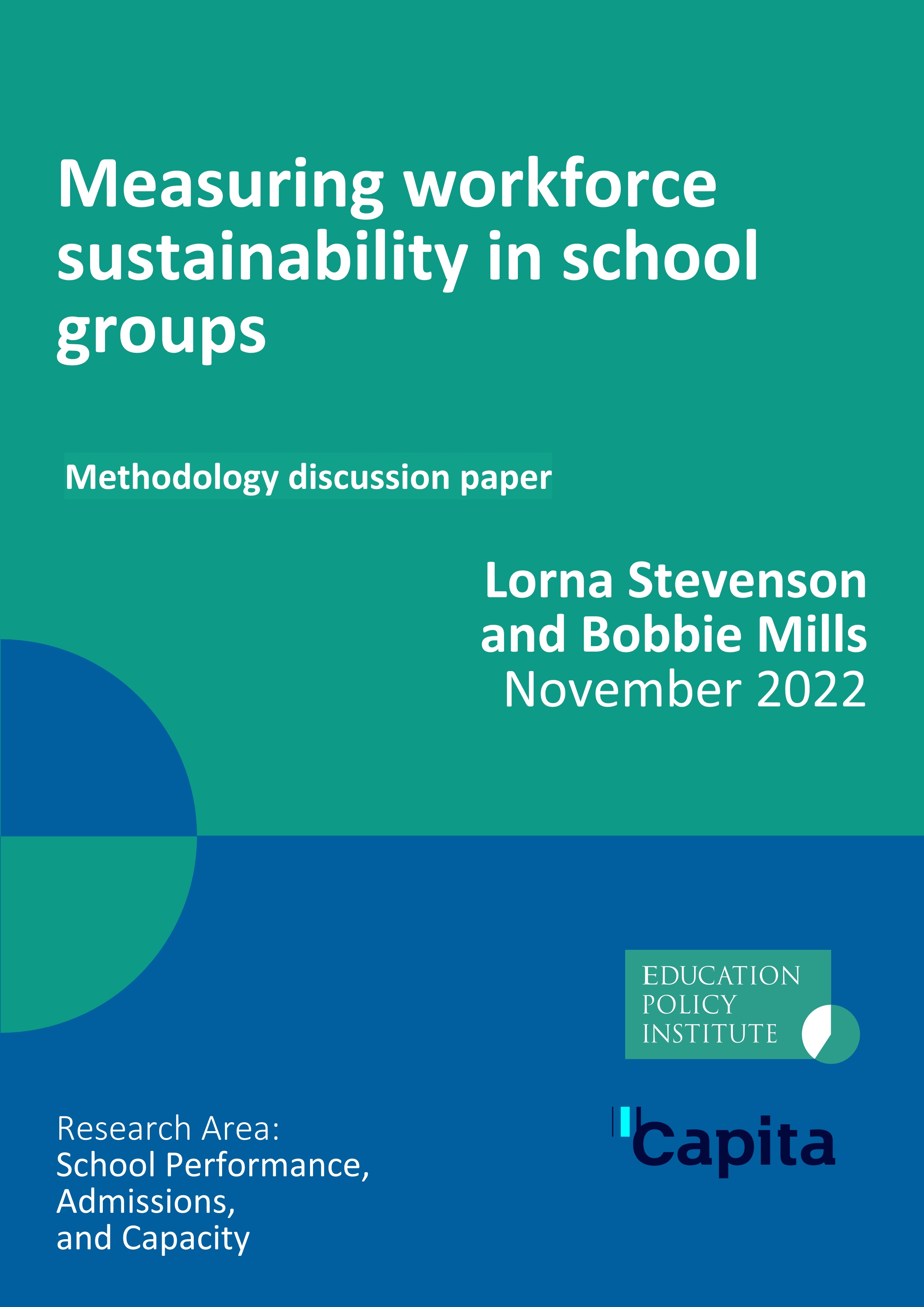As part of the Education Policy Institute’s (EPI) ongoing investigation into the features of effective school groups, a new report highlights the complexities around assessing workforce management in schools and launches a consultation seeking to develop understanding in this area.
Given government ambitions for all schools in England to join a ‘strong multi-academy trust’, a better understanding of the characteristics that make a ‘strong’ school group is required. Supported by Capita, this report is the latest in a series of EPI studies which consider broader school group characteristics including financial efficiency and inclusion metrics.
The report explores workforce management by proposing quantitative measures of sustainable turnover of classroom teachers, to better assess the characteristics of ‘strong’ school groups. The new consultation, launching alongside the report, asks how best to construct reliable and meaningful measures of workforce metrics that identify school groups with good organisational practices, and those that may raise cause for concern. It sets out two potential measures that capture different dynamics of changes in the school workforce:
- an annual turnover of classroom teachers; and
- a five-year cumulative measures of teacher turnover
High teacher turnover has been shown to negatively impact student attainment and drain school resources, potentially leading to poorer working conditions and becoming a reason for persistently high levels of turnover. While low teacher turnover is often viewed as preferable, it can also bring challenges such as fewer opportunities to improve job matching and by unproportionally distributing the burden of training new teachers throughout the wider school system.
EPI encourages those within the education sector to respond to the consultation questions in order to help improve our understanding of the characteristics of sustainable workforce management.
Read the full report here:
Consultation:
We encourage and welcome your feedback in order to improve these measures of efficiency of school groups. Please return your feedback to this address: feedback@epi.org.uk.
The closing date for emailing feedback is Friday 6th January. Please include some details of which organisation you are representing with your views, for example a university faculty, a school or an academy trust.
Consultation questions:
Group membership
Currently, a school which changes groups has a two year ‘grace period’ during which its turnover figures contribute to neither its old nor new group. Should we attempt to apply a phased transition? For example, turnover during the two-year period could be split between the old and new group? Alternatively, some ‘discounting’ could be applied to turnover figures in the final year of group membership to take account of ‘anticipatory’ staff exits?
Group exits
Our definition of an exit differs for different groups (i.e. movement within an LA is counted as exit whereas movement within a MAT is not). Is this the correct approach?
Staff groups
We currently report only teacher turnover. Should we report turnover for other staff groups? If so, should this be through separate measures, combined ones, or both?
If we can prioritise only some additional staff groups, which ones are most important and why?
- School leaders are a crucial determinant of school culture and there are concerns about maintaining sufficient supply. However, their numbers are small so measures may be less reliable, particularly as this group is most likely to move into related roles not captured in the SWC, such as LA and MAT central teams.
- Teaching Assistants work directly with young people, often the most vulnerable pupils. Maintaining long-term relationships might therefore be particularly important for this staff group. However, more teaching assistants have multiple contracts so we will lose more records during the de-duplication process. Teaching assistant turnover may also vary with other factors not currently controlled for, such as the proportion of pupils with ECHPs. For teacher turnover we include special schools within our main analysis. Given the far higher pupil to teaching assistant ratio in special schools, would we need split out special schools if reporting on this staff group?
- Previous research into support staff suggests the majority had not been working in education prior to taking on their current role. Should it be therefore expected that support staff might move in and out of the education sector more frequently than other staff groups? How should we take account of potential contracting out by some school groups?
Identifying outliers and contextualising turnover
Which factors should be considered as controls that are outside of the purview of group-level workforce management practices, and which should be considered to respond substantially with group-level policies?
How might we measure where this might vary across different school groups in different contexts?
Given the above, which methods are most appropriate for identifying ‘outlying’ school groups?
Other measures beyond turnover
Beyond turnover, what other measures might be usefully included in measures of workforce management? For example, EPI and the Ambition Institute have previously looked at how quickly staff are promoted within different school groups. We might also look at the proportion of staff working flexibly or look at the progression of different staff groups, such as male or female teachers or teachers from different ethnic backgrounds or qualification routes.
Are there workforce factors we would like to include that are not recorded in the SWC? For example, the proportion of teachers who have achieved NPQs or similar qualifications.
This report has been sponsored by Capita.

Capita is a consulting, transformation and digital services business. Every day our 52,000 colleagues help millions of people, by delivering innovative solutions to transform and simplify the connections between government and citizens, businesses and customers. We partner with our clients and provide the insight and cutting-edge technologies that give time back, allowing them to focus on what they do best and making people’s lives easier and simpler. We operate across three divisions – Capita Public Service, Capita Experience and Capita Portfolio – in the UK, Europe, India and South Africa. Capita is quoted on the London Stock Exchange (CPI.L). Further information can be found at: http://www.capita.com

